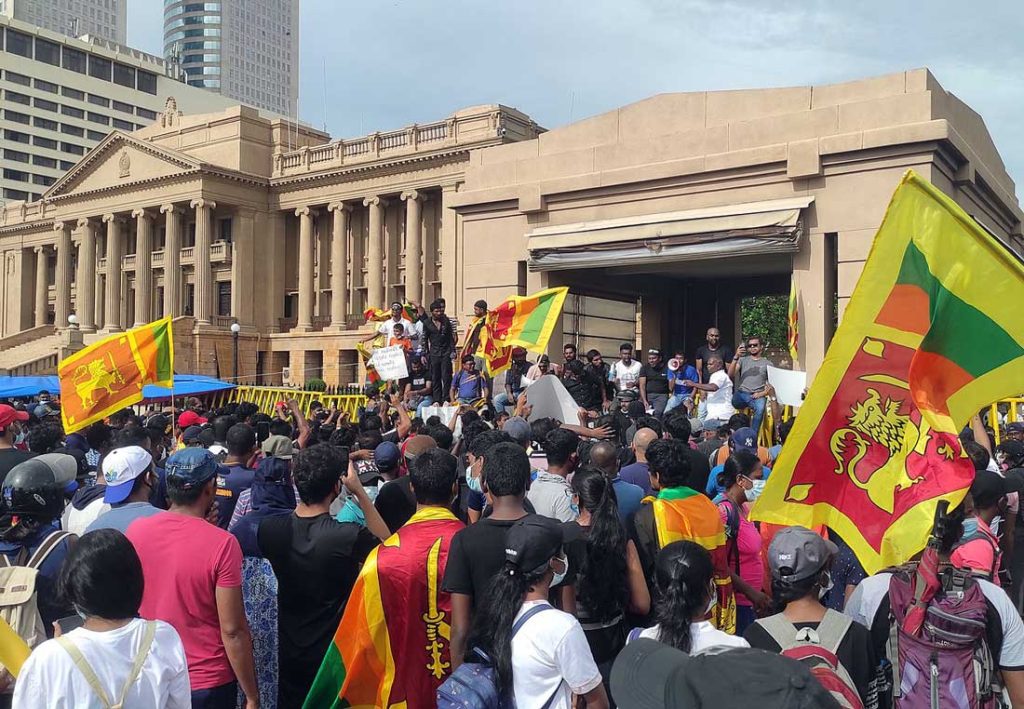People protesting the economic turmoil in Sri Lanka set fire to the house of Prime Minister Ranil Wickremesinghe and ransacked the official residence of President Gotabaya Rajapaksa on Saturday.
Several protestors were injured earlier in the day.
President Rajapaksa and Prime Minister Wickremesinghe have agreed to step down from power, and the country’s army appealed for calm.
Sri Lanka’s closest neighbor India, which has already pledged billions of dollars in assistance to ease the island nation’s hardship, has assured ‘all possible help and support.’

What led to the economic meltdown?
Sri Lanka’s central bank is prone to political influence, and attempts to make it an independent body have previously failed.
The current government, loyal to its election promises, reduced and removed certain taxes. For example, the taxpayers declined by 33.5 percent because of the new and wider tax-free threshold.
The reduction of VAT and Corporate tax – combined with abolishing a few taxes, led to massive budget deficits.
Rather than reversing or altering tax cuts, the central bank printed more currency resulting in soaring inflation.
The COVID pandemic did not help the island nation with its finances as the number of tourists dwindled. Despite announcing an economic emergency in late 2021, the government had to declare in April 2022 that it would default on its external debt of 51 billion dollars.
Partly owing to the current global situation, fuel is in shortage, and longer power cuts were imposed on households and businesses. The soaring prices of cooking gas, food, and other essentials led to public resentment.